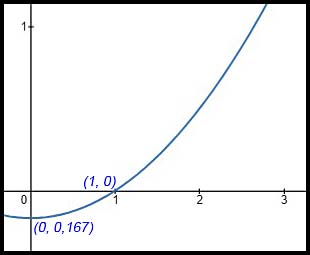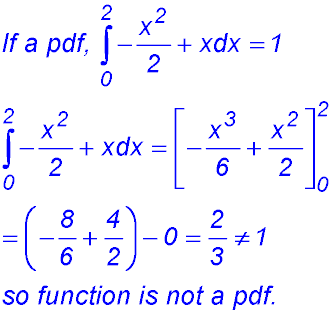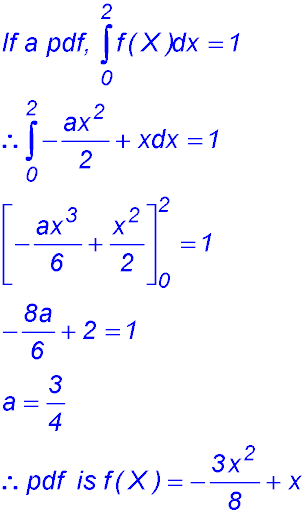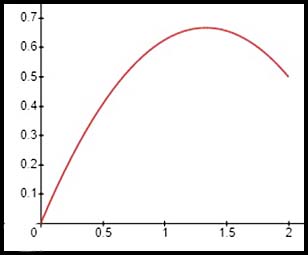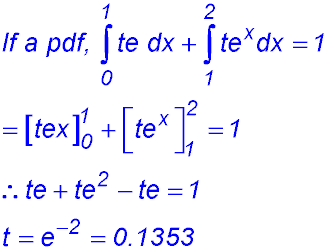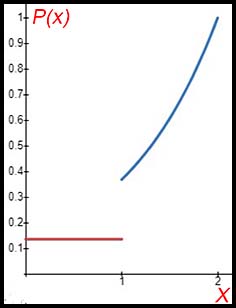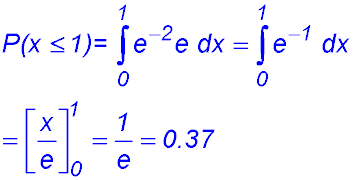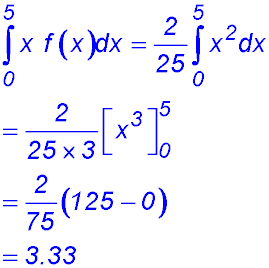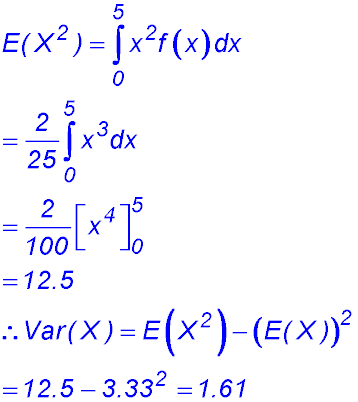Where the techniques of Maths
are explained in simple terms.
Continuous probability density functions.
Test Yourself 1 - Solutions.
- Algebra & Number
- Calculus
- Financial Maths
- Functions & Quadratics
- Geometry
- Measurement
- Networks & Graphs
- Probability & Statistics
- Trigonometry
- Maths & beyond
- Index
| Properties. | 1. (i) Gradient = -0.4÷ 5 = -0.08. Intercept is pr = 0.4 ∴PDF is P(X) = 0.4 - 0.8X [0, 5] (ii) Area under the line: ∴ a pdf. |
2. (i) Part 1:
(ii) Area 1: = 0.5×1× (0.5+0.3) = 0.4
|
|
3. (i) Part 1:
(ii) Area 1: 0.5 × 3 × 0.4 = 0.6 Area 2: 0.5 × 2 × 0.4 = 0.4 Total area = 1.0 ∴ a pdf. |
|
| Probability density function. | 4. Analysing the function
shows that:
Hence P(x) satisfies neither of the properties of a probability density function. |
5. (i)  . .
(ii) (iii) Although the definite integral for the given domain [0, 3] is 1.0, the y = f(x) values are negative for [0, 1] and it is not possible to have negative probabilities. Hence the function cannot be a probability density function. |
|
6. 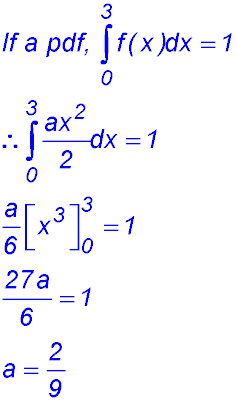 |
|
7. (i) 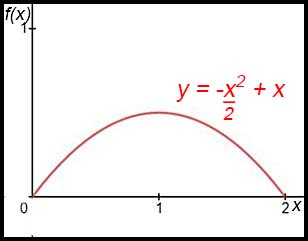
At x = 2, f(2) = 0 (ii) (iii) (iv) Pr (x = 2) = 0.5. |
|
8. (i) (ii) Comment: Click here. (iii) |
|
| 9. | |
| Uniformly distributed functions. | 10. (i) ISS
|
| Determining probability. | |
| Expected value and variance. | 14. |
15. (i) 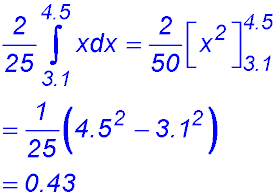
(ii) (iii) |
|
| Find the mode. | |




